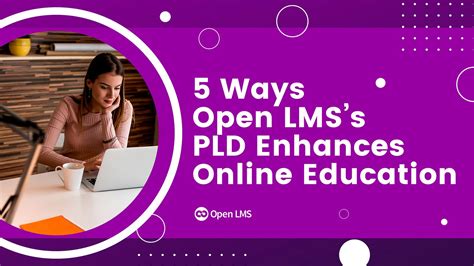The way we learn has undergone a significant transformation in recent years, thanks to the advancements in Learning Management System (LMS) technology. Traditional methods of learning, such as textbooks and classroom instruction, are no longer the only options. With the rise of digital learning, students can now access a vast array of educational resources and tools that cater to their individual needs and learning styles. In this article, we will explore five ways LMS technology enhances learning experiences, making it more engaging, effective, and enjoyable for students.
Personalized Learning Experiences

One of the significant advantages of LMS technology is its ability to provide personalized learning experiences for students. With the help of data analytics and artificial intelligence, LMS platforms can track individual students' progress, identify knowledge gaps, and offer tailored learning recommendations. This approach ensures that students receive relevant and engaging content, which caters to their learning needs and abilities. By providing a personalized learning experience, LMS technology helps students stay motivated and focused, leading to improved academic outcomes.
Adaptive Assessments
Another way LMS technology enhances learning experiences is through adaptive assessments. Traditional assessment methods often rely on multiple-choice questions or standardized tests, which may not accurately reflect a student's knowledge or understanding. Adaptive assessments, on the other hand, adjust their difficulty level and content in real-time, based on a student's performance. This approach provides a more accurate measure of a student's abilities and helps identify areas where they need additional support. By incorporating adaptive assessments, LMS platforms can help teachers and instructors provide targeted interventions and support, leading to improved student outcomes.
Access to Rich Multimedia Content

LMS technology provides students with access to a vast array of rich multimedia content, including videos, animations, and interactive simulations. This type of content can engage students in a way that traditional textbooks cannot, making learning more enjoyable and interactive. Multimedia content can also help students develop essential skills, such as critical thinking, problem-solving, and collaboration. By incorporating multimedia content into LMS platforms, educators can create immersive learning experiences that cater to different learning styles and preferences.
Collaboration and Community Building
LMS technology also enables collaboration and community building among students, which is essential for effective learning. Discussion forums, group projects, and peer review tools facilitate interaction and engagement among students, promoting a sense of community and shared learning. By providing a platform for students to connect with each other, LMS technology helps break down geographical barriers and fosters a culture of collaboration and mutual support. This approach not only enhances learning outcomes but also prepares students for the complexities of the modern workforce.
Real-Time Feedback and Assessment

LMS technology provides teachers and instructors with the ability to offer real-time feedback and assessment, which is critical for student growth and development. Automated grading tools and instant feedback mechanisms enable educators to track student progress and identify areas where students need additional support. This approach not only saves time and reduces the administrative burden but also helps students stay on track and motivated. By providing timely and relevant feedback, LMS technology enhances the learning experience and promotes academic achievement.
Data-Driven Insights
Finally, LMS technology provides educators with data-driven insights that inform instruction and drive student success. By analyzing learning analytics and data, teachers and instructors can identify trends, patterns, and areas of improvement. This information can be used to develop targeted interventions, adjust instructional strategies, and refine the learning experience. By leveraging data-driven insights, educators can create a more personalized and effective learning environment that meets the unique needs of each student.
Conclusion
In conclusion, LMS technology has revolutionized the way we learn, providing students with engaging, effective, and enjoyable learning experiences. By offering personalized learning experiences, adaptive assessments, access to rich multimedia content, collaboration and community building tools, real-time feedback and assessment, and data-driven insights, LMS platforms enhance the learning experience and promote academic achievement. As technology continues to evolve, we can expect to see even more innovative features and functionalities that further transform the learning landscape.
Gallery of LMS Technology Features






What is a Learning Management System (LMS)?
+A Learning Management System (LMS) is a software application used to manage, track, and deliver educational courses, training programs, and learning content.
What are the benefits of using an LMS?
+The benefits of using an LMS include improved student engagement, increased accessibility, enhanced collaboration, and more efficient grading and assessment.
Can an LMS be used for corporate training?
+Yes, an LMS can be used for corporate training, enabling companies to manage and deliver training programs, track employee progress, and improve overall performance.
